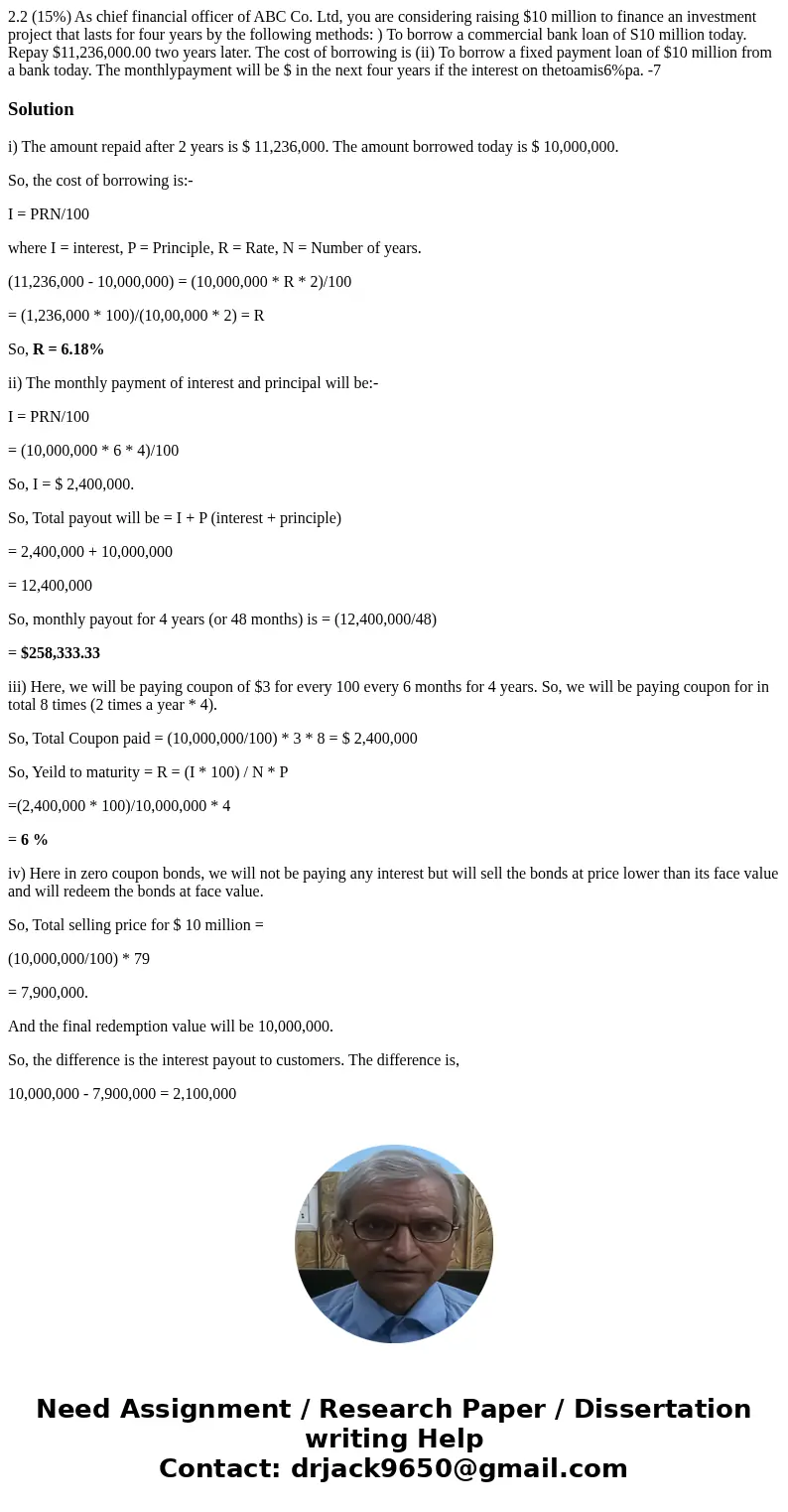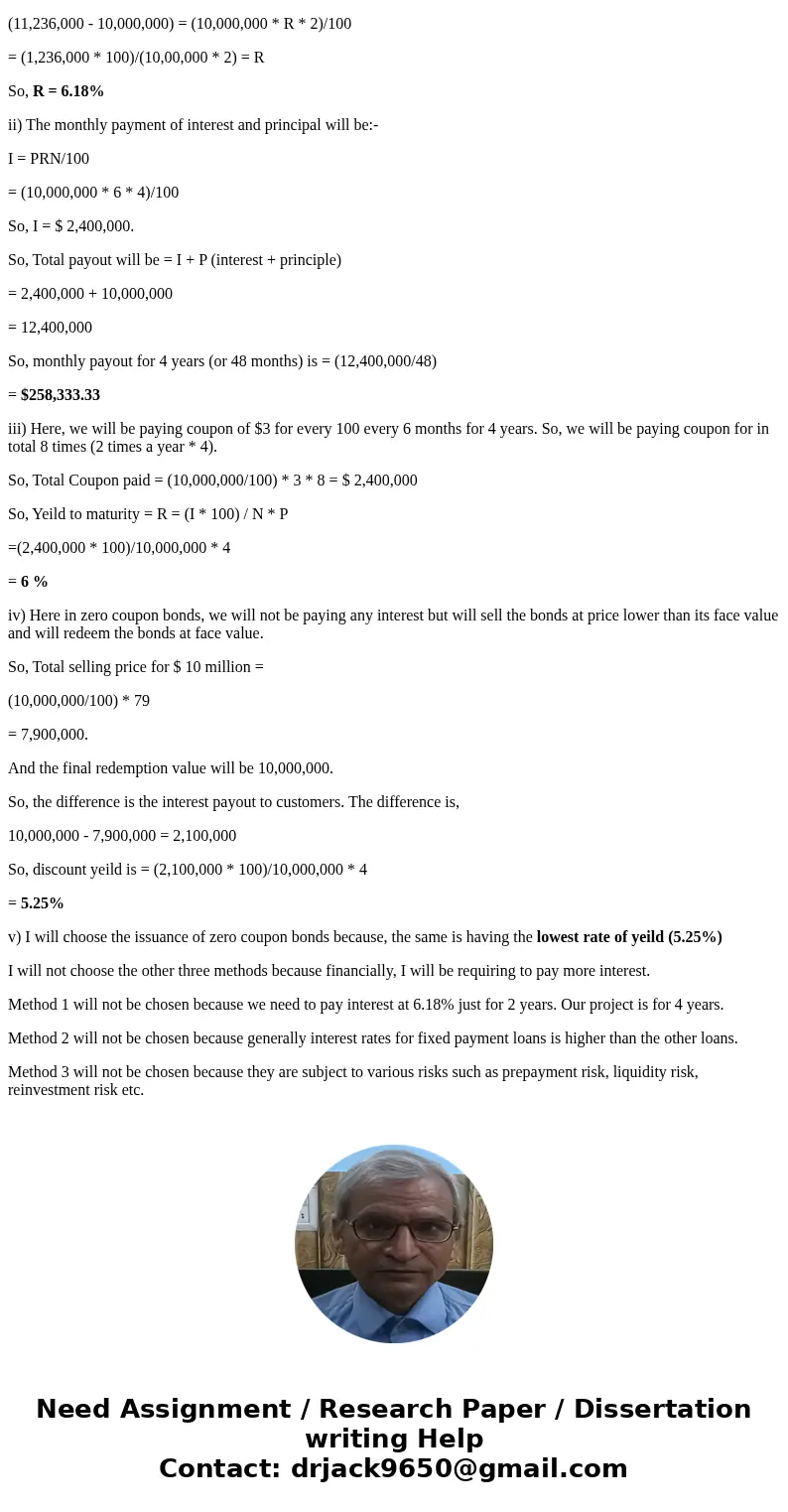22 15 As chief financial officer of ABC Co Ltd you are consi
Solution
i) The amount repaid after 2 years is $ 11,236,000. The amount borrowed today is $ 10,000,000.
So, the cost of borrowing is:-
I = PRN/100
where I = interest, P = Principle, R = Rate, N = Number of years.
(11,236,000 - 10,000,000) = (10,000,000 * R * 2)/100
= (1,236,000 * 100)/(10,00,000 * 2) = R
So, R = 6.18%
ii) The monthly payment of interest and principal will be:-
I = PRN/100
= (10,000,000 * 6 * 4)/100
So, I = $ 2,400,000.
So, Total payout will be = I + P (interest + principle)
= 2,400,000 + 10,000,000
= 12,400,000
So, monthly payout for 4 years (or 48 months) is = (12,400,000/48)
= $258,333.33
iii) Here, we will be paying coupon of $3 for every 100 every 6 months for 4 years. So, we will be paying coupon for in total 8 times (2 times a year * 4).
So, Total Coupon paid = (10,000,000/100) * 3 * 8 = $ 2,400,000
So, Yeild to maturity = R = (I * 100) / N * P
=(2,400,000 * 100)/10,000,000 * 4
= 6 %
iv) Here in zero coupon bonds, we will not be paying any interest but will sell the bonds at price lower than its face value and will redeem the bonds at face value.
So, Total selling price for $ 10 million =
(10,000,000/100) * 79
= 7,900,000.
And the final redemption value will be 10,000,000.
So, the difference is the interest payout to customers. The difference is,
10,000,000 - 7,900,000 = 2,100,000
So, discount yeild is = (2,100,000 * 100)/10,000,000 * 4
= 5.25%
v) I will choose the issuance of zero coupon bonds because, the same is having the lowest rate of yeild (5.25%)
I will not choose the other three methods because financially, I will be requiring to pay more interest.
Method 1 will not be chosen because we need to pay interest at 6.18% just for 2 years. Our project is for 4 years.
Method 2 will not be chosen because generally interest rates for fixed payment loans is higher than the other loans.
Method 3 will not be chosen because they are subject to various risks such as prepayment risk, liquidity risk, reinvestment risk etc.


 Homework Sourse
Homework Sourse